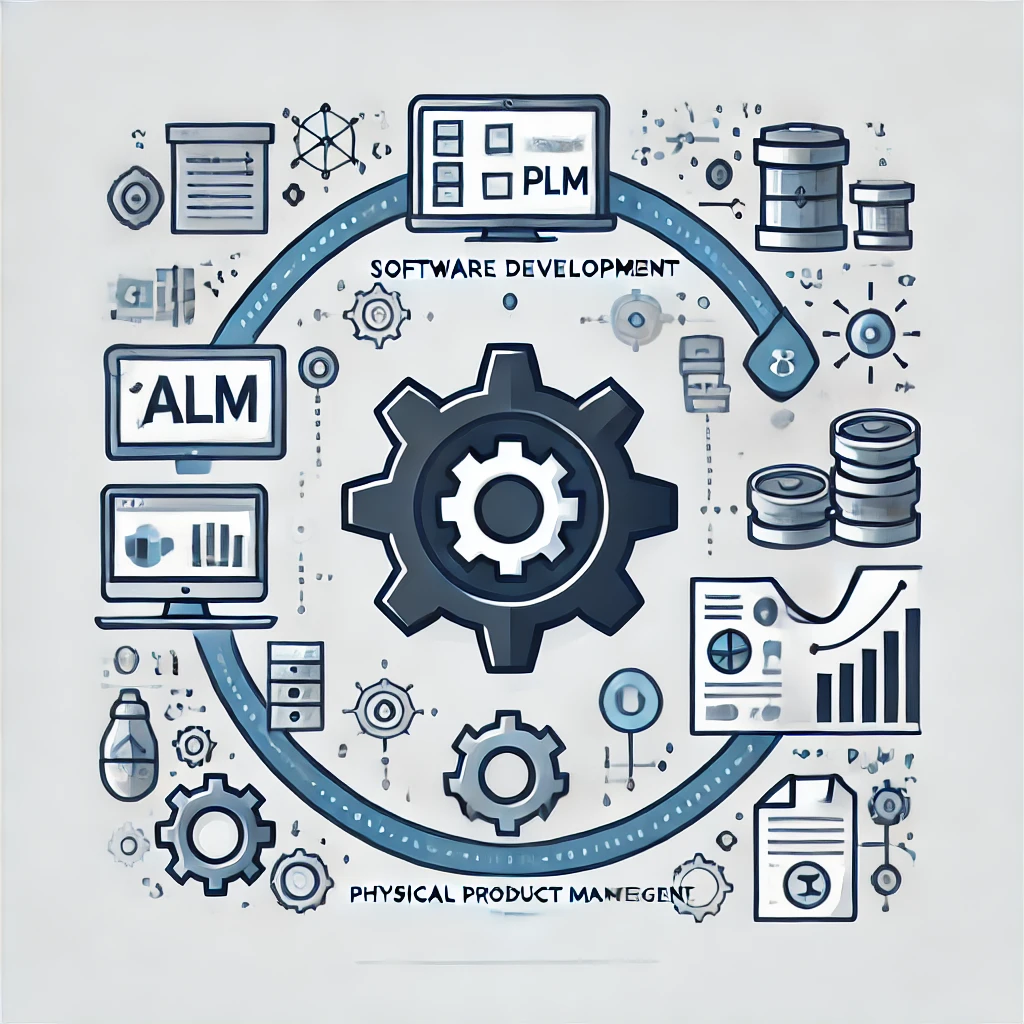
In today’s fast-paced, competitive market, efficient product development is more crucial than ever. Two essential systems that play a pivotal role in this are Application Lifecycle Management (ALM) and Product Lifecycle Management (PLM). While ALM focuses on managing the lifecycle of software applications, PLM handles the lifecycle of physical products. But what happens when you integrate these two powerful systems? The result is a synergy that can streamline workflows, reduce errors, and significantly improve communication within your organization.
This blog post aims to provide a comprehensive guide on integrating ALM and PLM systems, highlighting the benefits and practical steps for achieving this integration. Whether you are a Product Manager, IT Professional, Engineering Team, CIO, or CEO, this guide will offer valuable insights to optimize your product development process.
Understanding ALM and PLM Systems
ALM, or Application Lifecycle Management, is a framework that manages the lifecycle of software applications from inception to retirement. It encompasses various phases such as requirements management, design, development, testing, deployment, and maintenance. By providing a structured approach to software development, ALM ensures that projects are completed on time, within budget, and meet quality standards.
ALM plays a critical role in managing the complexities of software development. It enables teams to collaborate effectively, track progress, and maintain a high level of transparency. Key components of ALM include project management tools, version control systems, and automated testing frameworks. By integrating these elements, ALM helps in identifying bottlenecks early and ensures a smooth development process.
PLM, or Product Lifecycle Management, is a comprehensive approach to managing the lifecycle of physical products from conceptualization to disposal. It involves various stages such as design, manufacturing, distribution, maintenance, and end-of-life management. PLM provides a centralized repository for all product-related information, ensuring consistency and accuracy across different departments.
PLM is crucial for organizations that deal with physical products. It streamlines processes, improves collaboration, and reduces time-to-market. Key features of PLM systems include CAD integration, bill of materials (BOM) management, and compliance tracking. By offering a holistic view of the product lifecycle, PLM helps organizations make informed decisions and stay competitive in the market.
The Benefits of Integration
Integrating ALM and PLM systems brings a wealth of benefits. The combined capabilities of these systems create a seamless flow of information between software and hardware teams. This synergy enhances collaboration and ensures that both teams are aligned with the project goals.
One of the most significant advantages of integrating ALM and PLM is the streamlined workflows. By having a unified system, teams can easily access the information they need, reducing the time spent on redundant tasks. This integration also eliminates data silos, ensuring that all stakeholders have a comprehensive view of the project.
Integration minimizes the risk of errors by providing a single source of truth for all project-related information. This reduces the chances of miscommunication and ensures that everyone is on the same page. Improved communication leads to faster decision-making and a more efficient development process.
While the benefits are substantial, the integration process is not without challenges. Common hurdles include data migration, system compatibility, and change management. However, with careful planning and execution, these challenges can be overcome, leading to improved efficiency and productivity.
Implementing Integration
Future Trends and Innovations
The future of ALM and PLM integration looks promising, with advancements in technology paving the way for even greater synergies. Emerging trends such as artificial intelligence (AI) and the Internet of Things (IoT) are set to revolutionize product development processes.
AI-powered analytics can provide deeper insights into product performance, while IoT-enabled devices can offer real-time data on product usage. These innovations will further enhance the capabilities of integrated ALM and PLM systems, making them indispensable tools for modern enterprises.
Recap and Conclusion
Integrating ALM and PLM systems offers numerous benefits, including streamlined workflows, reduced errors, and improved communication. By leveraging these synergies, organizations can optimize their product development processes and stay ahead in the competitive market.
Are you ready to supercharge your product development efficiency? Contact us at W-ITC, and we can help you integrate ALM and PLM systems seamlessly. Let’s work together to unlock the full potential of your organization.
In today’s dynamic business environment, staying competitive requires continuous innovation and efficiency. Integrating ALM and PLM systems is a strategic move that can provide your organization with a significant edge. Don’t wait—take the first step towards a more efficient and productive future today.


design by Proformat